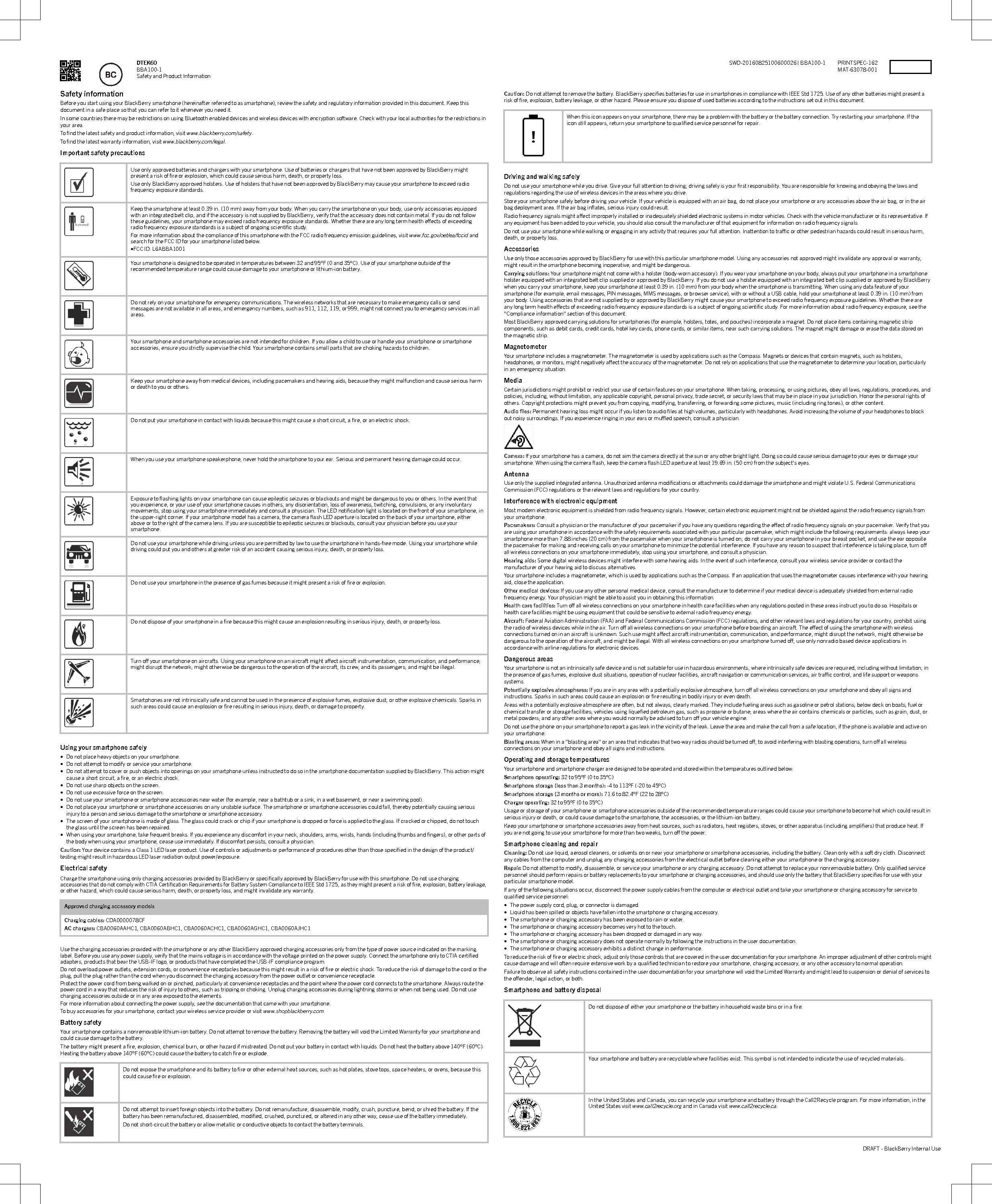BlackBerry BBA1001 GSM Quad-band/HSPA-UMTS Penta-band/ LTE Deca-band mobile phone User Manual DTEK60 Safety and Product Information
BlackBerry Limited GSM Quad-band/HSPA-UMTS Penta-band/ LTE Deca-band mobile phone DTEK60 Safety and Product Information
User manual
